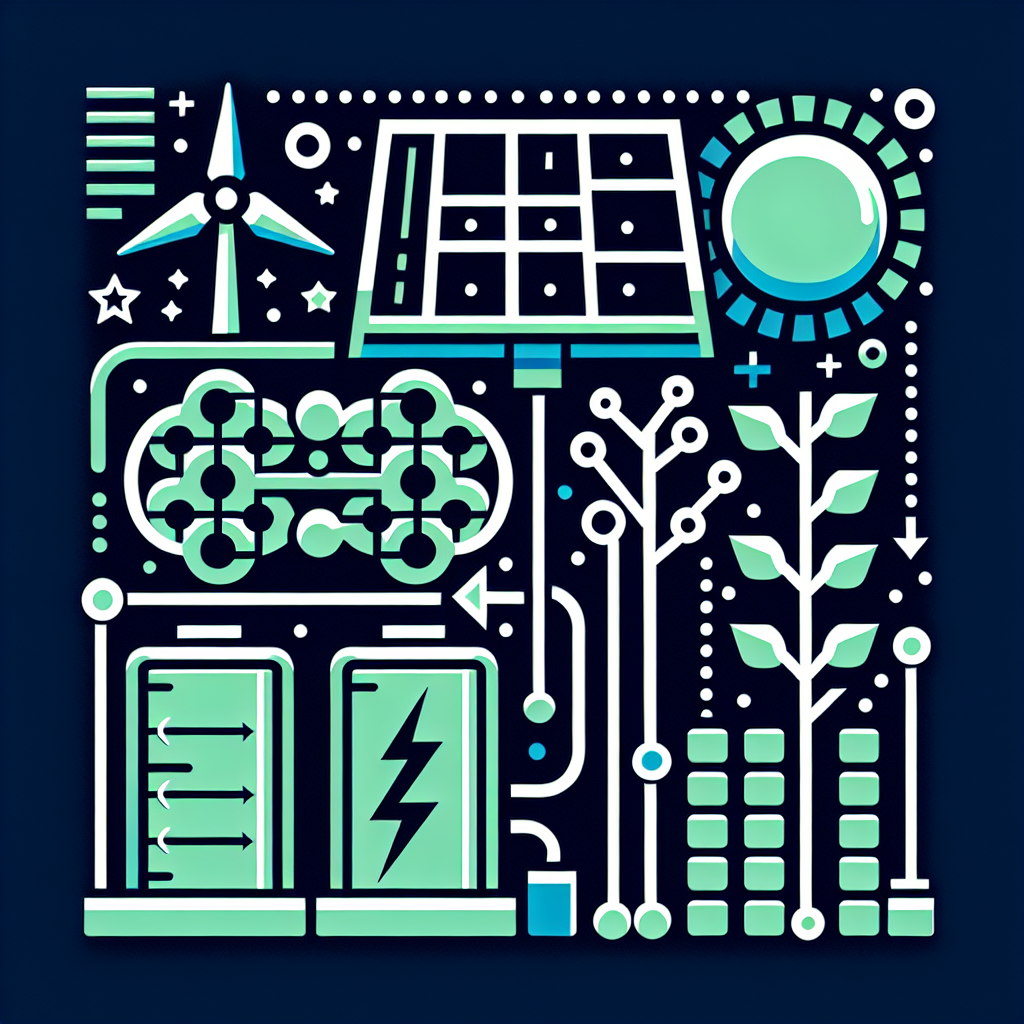In recent years, renewable energy sources such as solar and wind power have gained significant popularity as alternatives to traditional fossil fuels. However, one of the major challenges facing the widespread adoption of renewable energy is the issue of intermittency. Unlike fossil fuel power plants, which can generate electricity consistently, renewable energy sources are dependent on weather conditions and time of day, leading to fluctuations in energy production.
Energy storage systems play a crucial role in addressing the intermittency of renewable energy sources by storing excess energy during periods of high production and releasing it when production is low. These systems help to stabilize the grid, reduce the need for backup power plants, and increase the overall efficiency of renewable energy generation.
Machine learning, a subset of artificial intelligence, has emerged as a powerful tool for optimizing energy storage systems in renewables. By analyzing vast amounts of data and identifying patterns and trends, machine learning algorithms can enhance the performance and efficiency of energy storage systems, ultimately reducing costs and improving the reliability of renewable energy sources.
One of the key ways in which machine learning can optimize energy storage systems in renewables is through predictive modeling. By analyzing historical data on energy production and consumption, weather patterns, and grid demand, machine learning algorithms can forecast future energy generation and consumption trends. This allows energy storage systems to anticipate when energy production will be high or low and adjust their operations accordingly, maximizing the efficiency of the system.
Another way in which machine learning can optimize energy storage systems is through real-time monitoring and control. By continuously analyzing data from sensors and meters, machine learning algorithms can adjust the charging and discharging of energy storage systems in real-time to respond to fluctuations in energy production and demand. This dynamic optimization can help to minimize energy waste and ensure that energy storage systems are operating at peak efficiency at all times.
Machine learning can also be used to optimize the design and configuration of energy storage systems. By analyzing data on energy consumption patterns, grid demand, and the performance of different types of energy storage technologies, machine learning algorithms can identify the most effective combination of storage technologies and configurations for a given renewable energy system. This can help to maximize the overall efficiency and reliability of the system while minimizing costs.
In addition to optimizing energy storage systems, machine learning can also help to improve the overall integration of renewable energy sources into the grid. By analyzing data on grid demand, transmission constraints, and energy market prices, machine learning algorithms can optimize the scheduling and dispatch of renewable energy generation and storage assets to maximize revenue and minimize costs. This can help to make renewable energy sources more competitive with traditional fossil fuel power plants and accelerate the transition to a cleaner and more sustainable energy system.
Overall, machine learning has the potential to revolutionize the way in which energy storage systems are optimized in renewables. By harnessing the power of data analytics and artificial intelligence, machine learning algorithms can help to maximize the efficiency, reliability, and profitability of renewable energy sources, ultimately accelerating the transition to a clean and sustainable energy future.
FAQs:
Q: How does machine learning optimize energy storage systems in renewables?
A: Machine learning algorithms analyze vast amounts of data on energy production, consumption, weather patterns, and grid demand to forecast future trends and adjust the operations of energy storage systems in real-time, maximizing efficiency and reliability.
Q: What are some of the benefits of using machine learning to optimize energy storage systems in renewables?
A: Machine learning can help to reduce costs, improve the reliability of renewable energy sources, and accelerate the transition to a clean and sustainable energy system by maximizing the efficiency of energy storage systems.
Q: How can machine learning be used to optimize the design and configuration of energy storage systems in renewables?
A: Machine learning algorithms can analyze data on energy consumption patterns, grid demand, and the performance of different energy storage technologies to identify the most effective combination of storage technologies and configurations for a given renewable energy system.
Q: How does machine learning help to improve the integration of renewable energy sources into the grid?
A: Machine learning algorithms can optimize the scheduling and dispatch of renewable energy generation and storage assets to maximize revenue and minimize costs, making renewable energy sources more competitive with traditional fossil fuel power plants.

